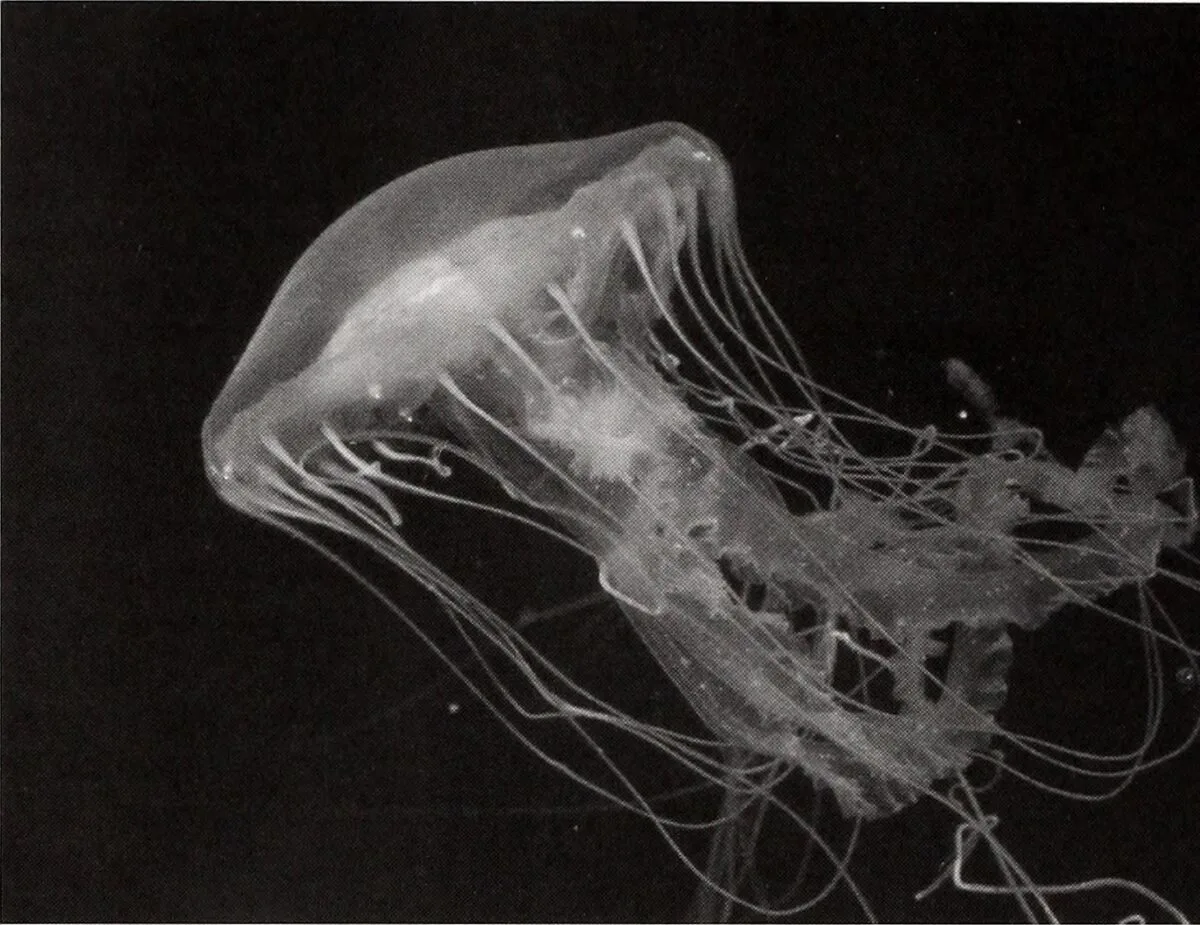The Mariana Trench is a massive, unique habitat that extends over 36,000 feet below the ocean’s surface and has long attracted scientists and adventurers. Many magnificent, frequently frightening species adapted to their harsh, high-pressure environment call this incredible chasm home.
Furthermore, The Mariana Trench is a paradise of unusual and interesting species, unlike any other planet region, from the bioluminescent sea life that illuminates the night to the strange, never-before-seen sea monsters lurking in its depths.
1. The Dumbo Octopus
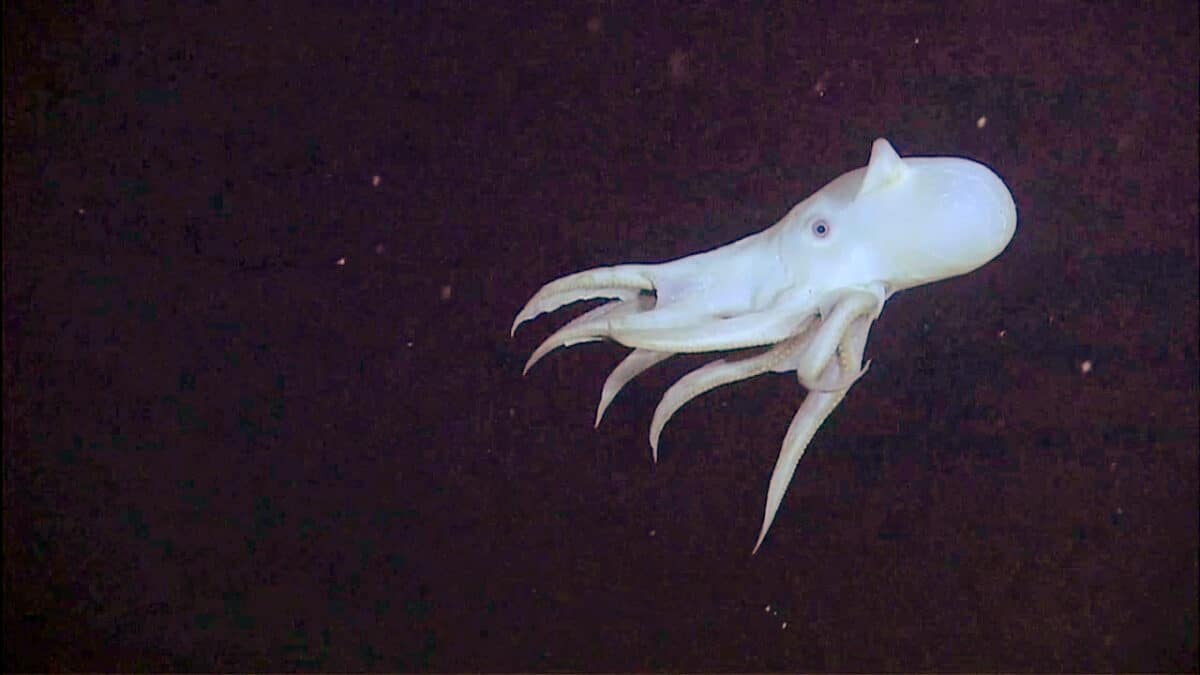
One of the most intriguing animals in the Mariana Trench is the Dumbo Octopus. This deep-sea resident received the name due to its likeness to the well-known Disney figure Dumbo. Large, floppy ears on the octopus are fins that aid in swimming and movement through the water.
It is typically about 20 centimeters long and has a small, spherical body. Because of its fragile, transparent skin, which lets it blend in with its surroundings, it is hard for predators to see.
The Dumbo Octopus is a friendly animal that primarily eats little crustaceans. Its habitat is typically between 3,000 and 4,000 meters below the surface, almost always subfreezing. When threatened, the Dumbo Octopus, which spends the majority of its life hovering just over the ocean floor, balls up.
2. An Anglerfish
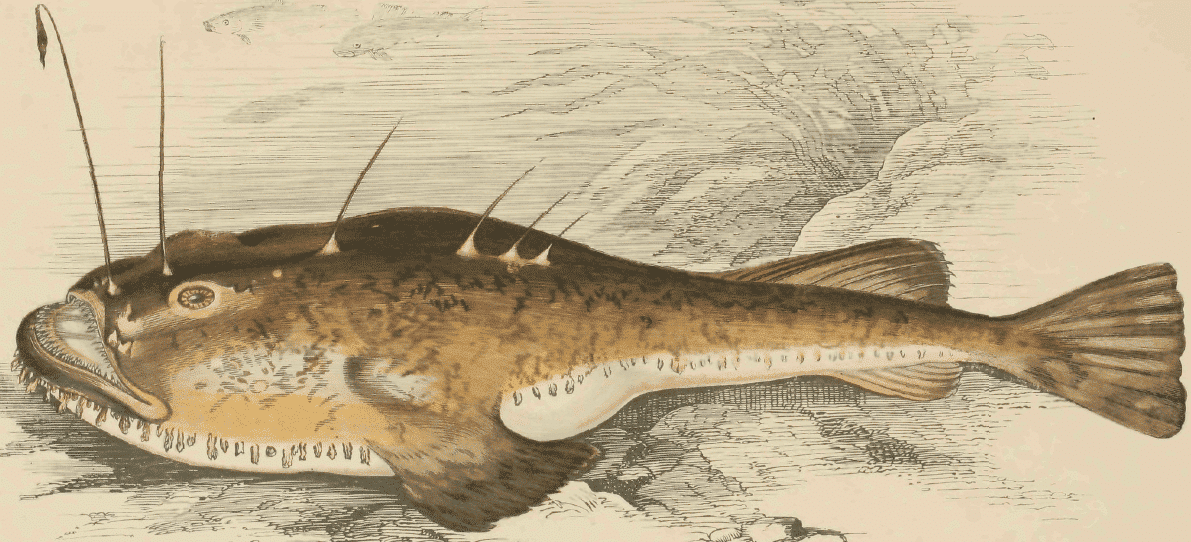
The Anglerfish is one of the most unusual animals in the Mariana Trench. On top of its head, this deep-sea predator has a peculiar bioluminescent lure to draw in prey. The Anglerfish opens its enormous mouth to an unusually wide angle and swallows prey whole with its sharp teeth.
The fish’s body is typically black or dark brown and has spiky scales to ward off predators. Due to the dim vision required by the deep-sea environment, it largely relies on its sense of smell. The Anglerfish is a lone predator found at depths exceeding 4,000 meters. It also has both male and female reproductive organs.
3. Fish The Grenadier
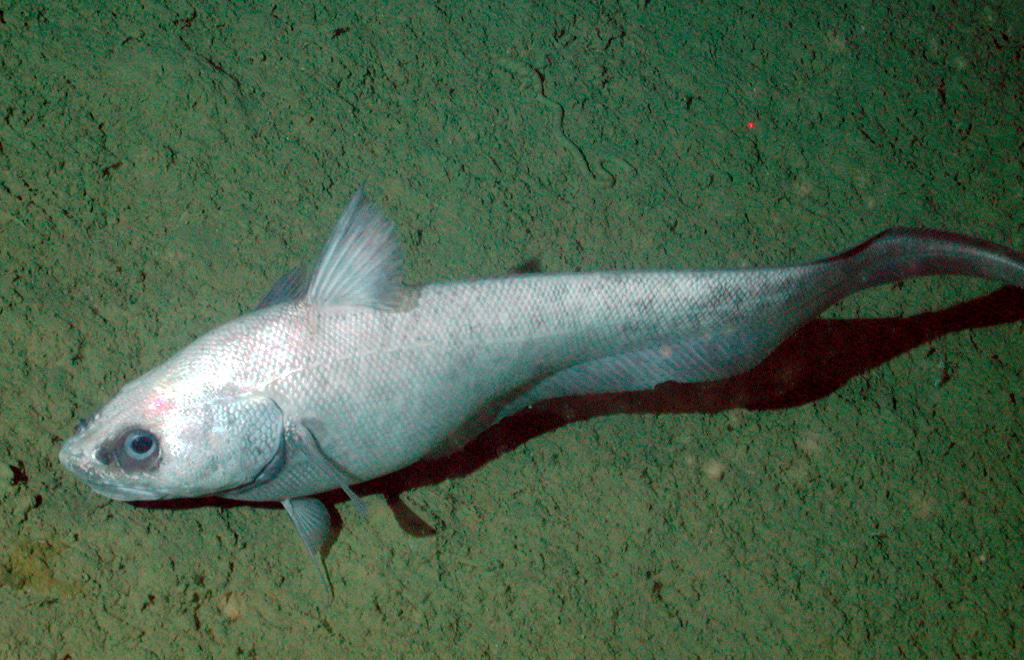
The Mariana Trench’s deepest regions are home to a species of fish called the Grenadier Fish. This long, elongated fish is often brown, black, or dark blue and can reach lengths of 60 centimeters. It has huge eyes that let it see in the darkness, and its body is covered in scales.
Moreover, The Grenadier Fish eats mostly small crustaceans and other fish and has weak teeth. It has been observed to move vertically through the water column, preying on creatures that reside near the surface during the day and diving back down into the depths at night.
It has been discovered that this fish can survive at depths above 7,000 meters. Despite living in deep waters, grenadier fish are a common human food source, particularly in Japan, where they are considered a delicacy. However, the Grenadier Fish population is currently in danger due to overfishing.
4. Deep-Water Jellyfish
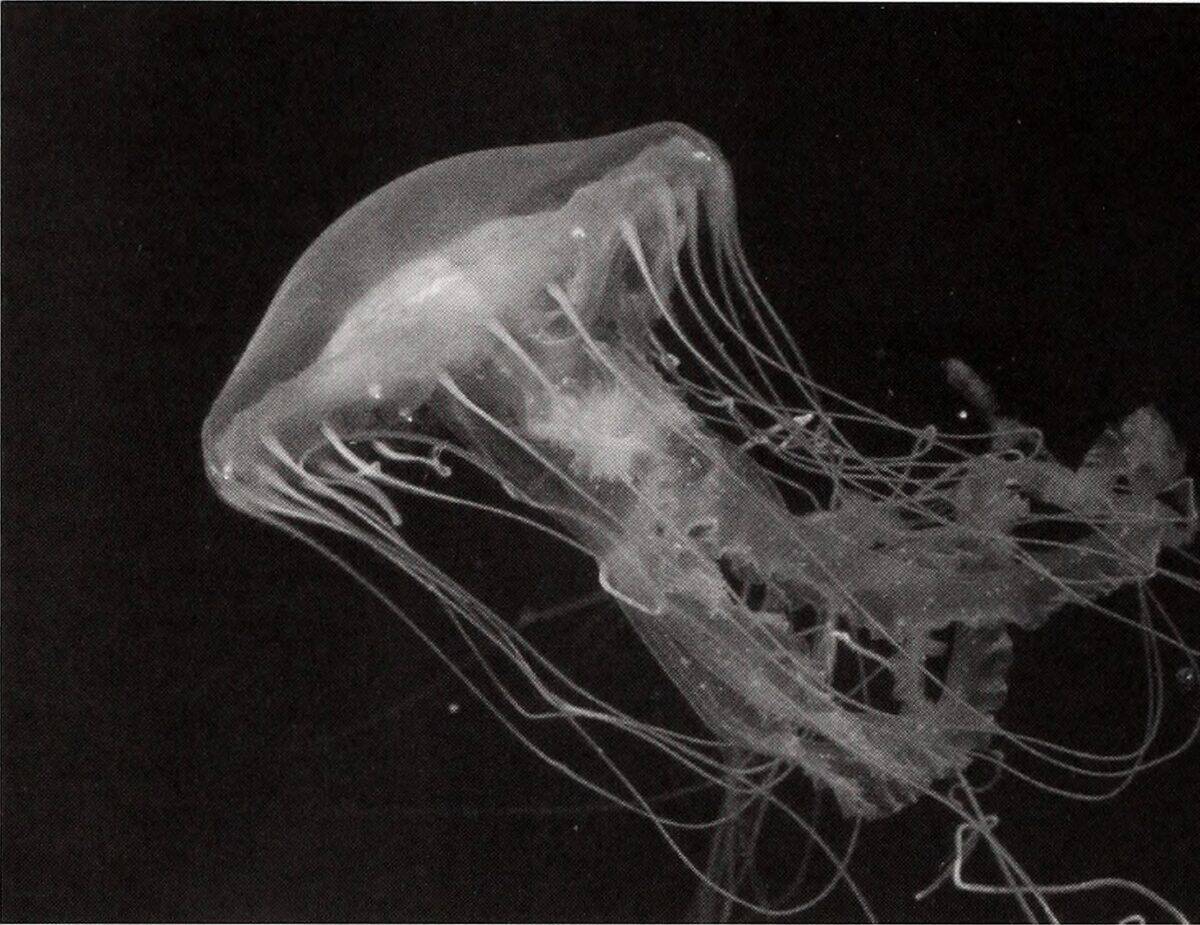
The Mariana Trench is home to unusual and fascinating deep-water jellyfish. They frequently have a transparent gelatinous body around 30 cm in diameter. The bioluminescent property of deep-water jellyfish makes them special since it enables them to generate their light. They use this trait to draw in prey and frighten away predators.
The lengthy, branching tentacles of deep-sea jellyfish, which can reach lengths of several meters, enable them to grasp and ingest prey easily. From the continental shelf to the abyssal plain, they are spread out throughout the Mariana Trench.
5. The Giant Squid
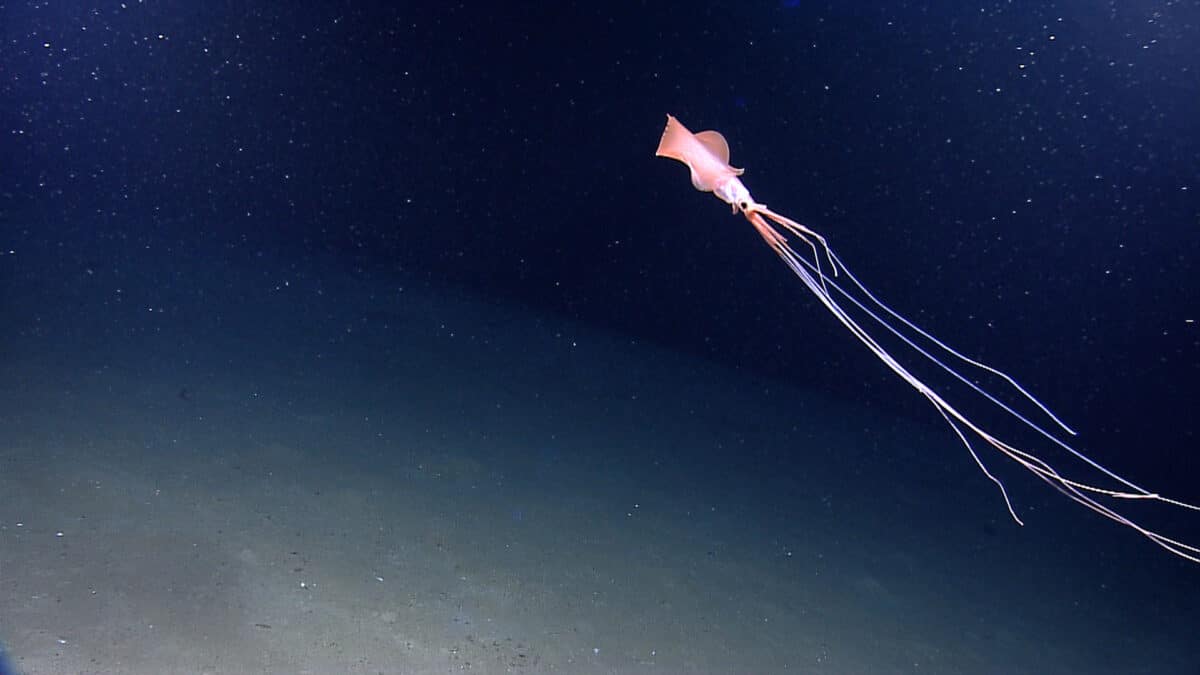
The giant squid is a mysterious deep-sea predator that has fascinated people for generations. These enormous cephalopods, whose length can reach 43 feet, have the biggest eyes among all living things. They use these eyes to find their way around and seek prey in the Mariana Trench, where they love hunting.
Also, the most common prey of the gigantic squid, which can crush just about anything with its immensely strong beak, are fish and other squid. However, little is known about their behavior and environment despite their size and power.
6. An Amphipod
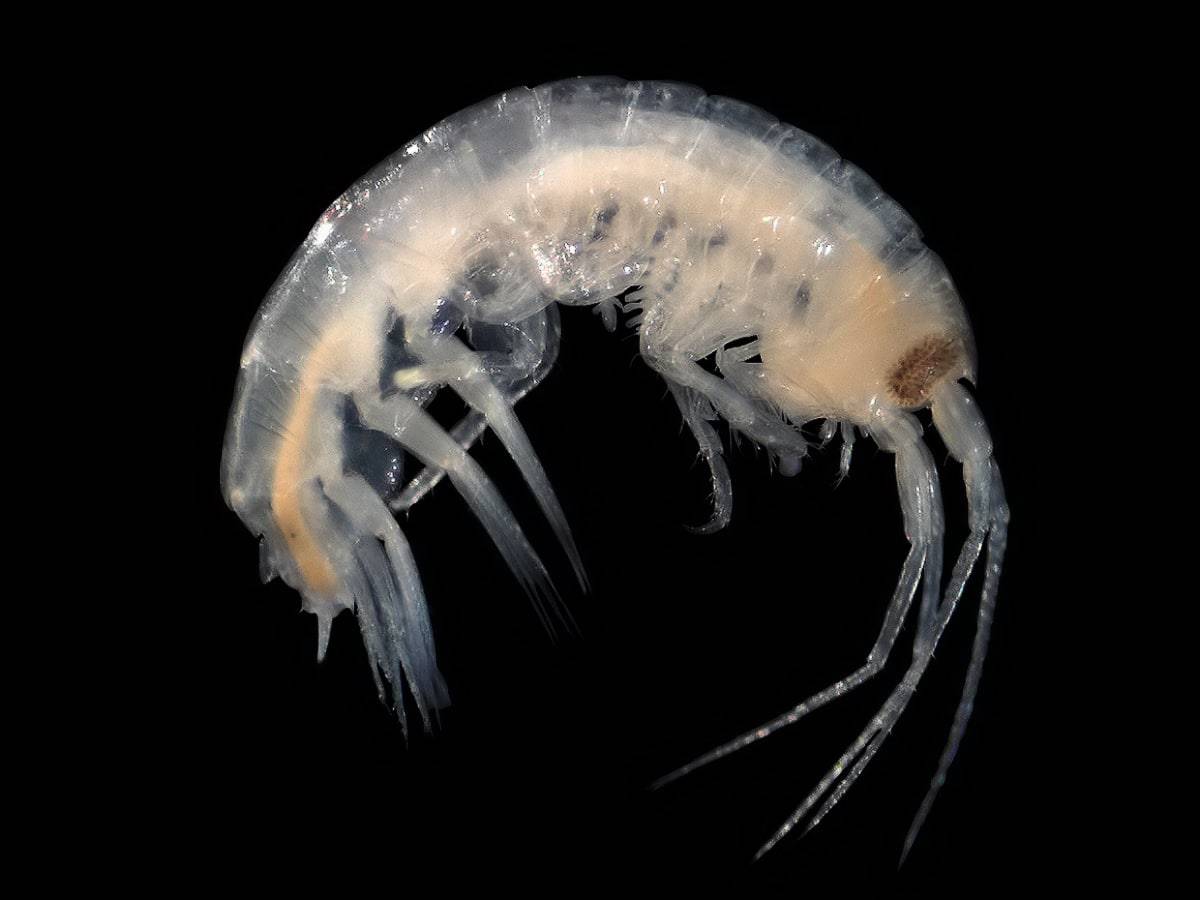
The Mariana Trench is home to the tiny amphipod, which resembles a shrimp. They range in size from being less than half an inch long to reaching lengths of more than nine inches.
Since they are scavengers and eat the carcasses of other deep-sea species, amphipods are essential to the Mariana Trench ecosystem. A thick exoskeleton shields The amphipod from predators and the chilly, murky waters of the deep sea.
7. Snailfish
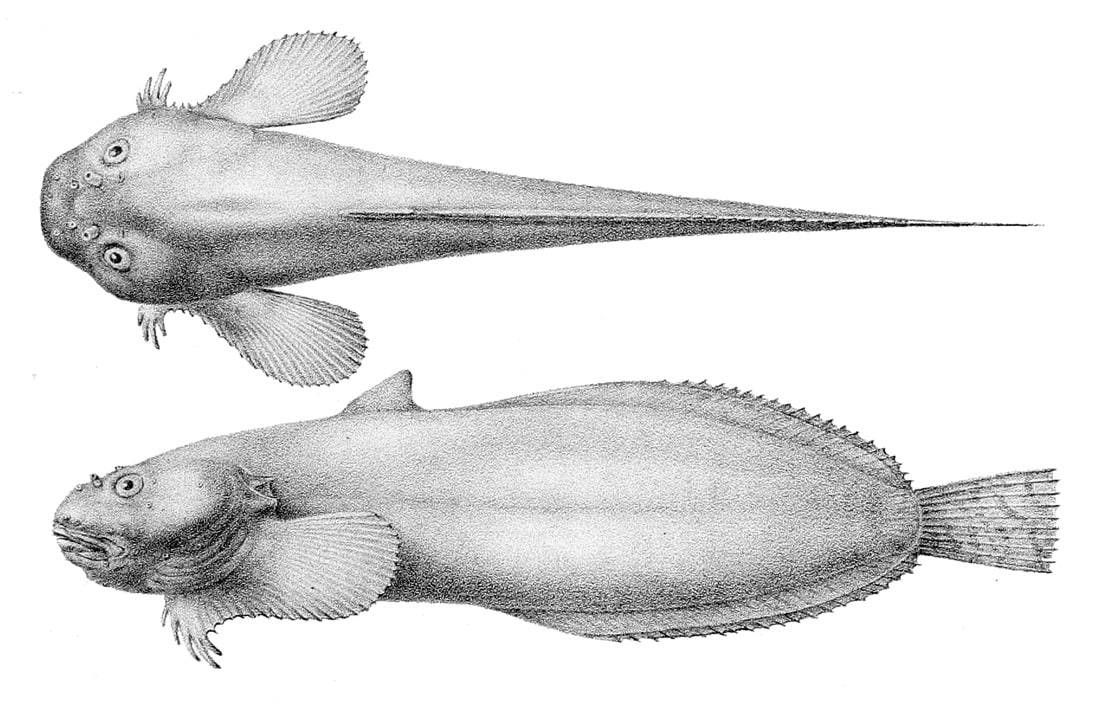
The soft-bodied snailfish is ideally suited to living in the Mariana Trench. Because of their smooth, slipper-like look, they are called “snailfish”. They have tiny flattened heads and bodies, measuring one to six inches long. Because they lack a swim bladder, they have a special adaptation that enables them to withstand the extreme pressure at these depths. They live at depths between 4,000 and 8,000 meters and frequently eat small crustaceans discovered on the seafloor as food.
8. Deep-Sea Hatchetfish
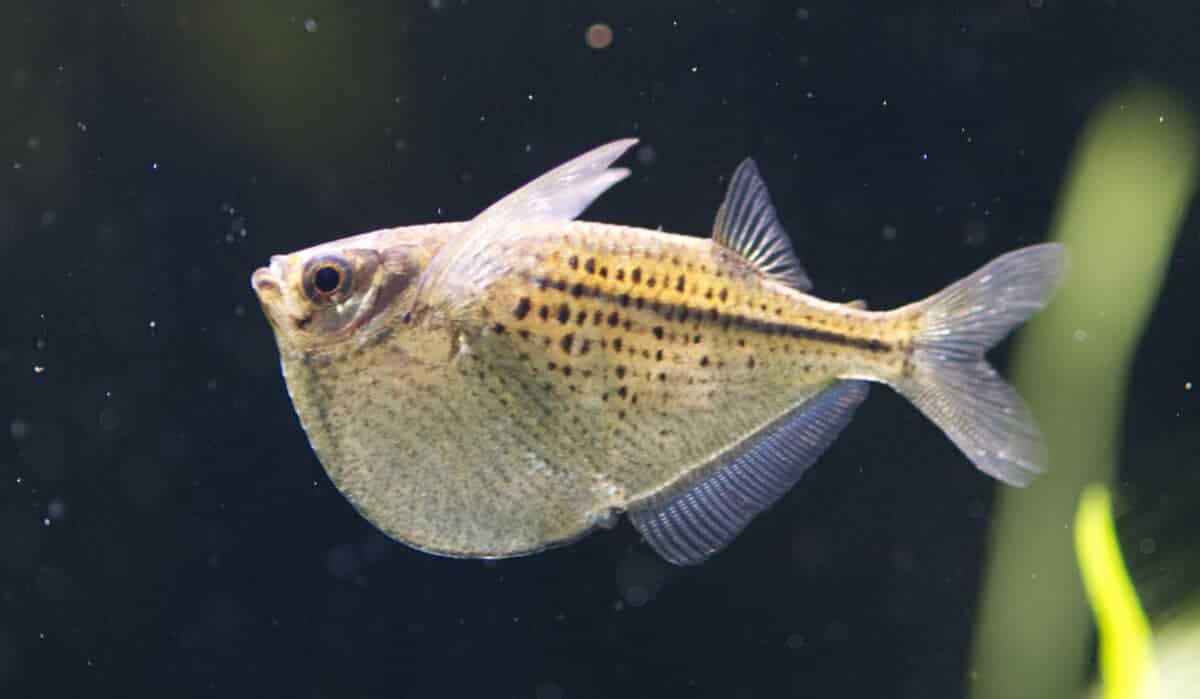
A little deep-sea hatchet fish lives between the continental shelf and the abyssal plain. They have a distinctive appearance: a flat, triangular body and big, round eyes. The bioluminescent property of deep-water hatchet fish aids in communication with other members of their species and aids in attracting prey. They are ambush predators that wait for their prey to approach them while hiding in the Mariana Trench’s ominous depths.
9. Sea Cucumber
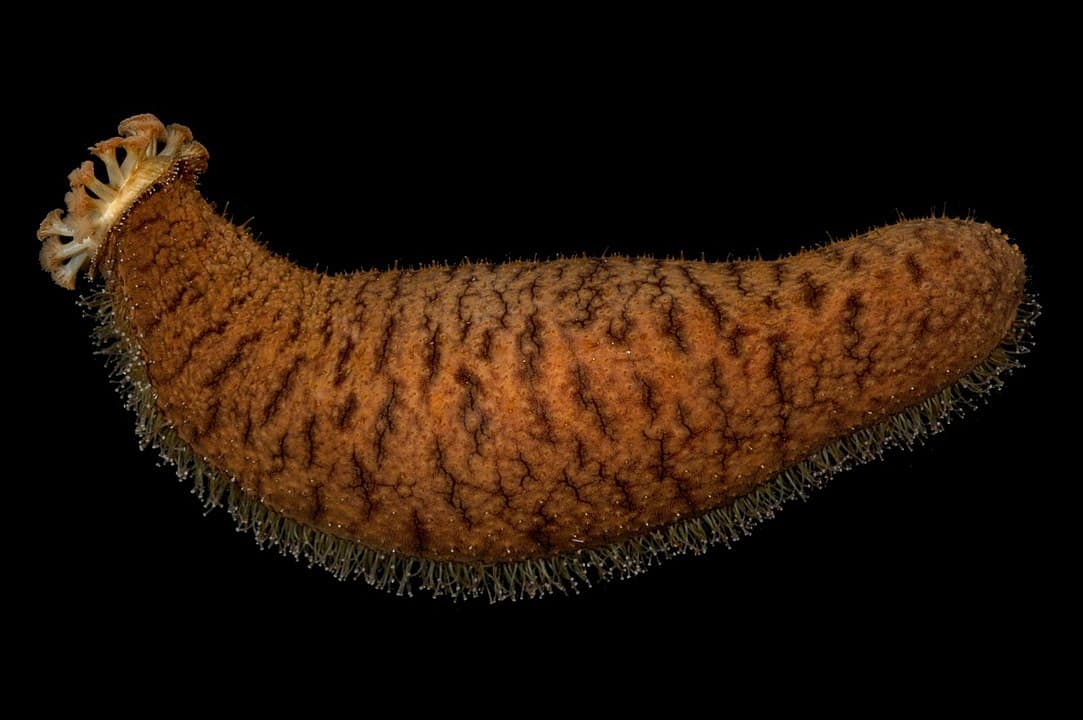
The marine invertebrate known as the sea cucumber can be found in the world’s oceans, even the Mariana Trench. The flexible body cover that sea cucumbers have makes them unusual in that it shields them from predators. They consume minute food particles that they discover on the seafloor and contribute to the cleaning of the seafloor by eating debris and filtering water. They can be found at depths of up to 4,000 meters and come in various sizes and shapes.
10. Basket Star
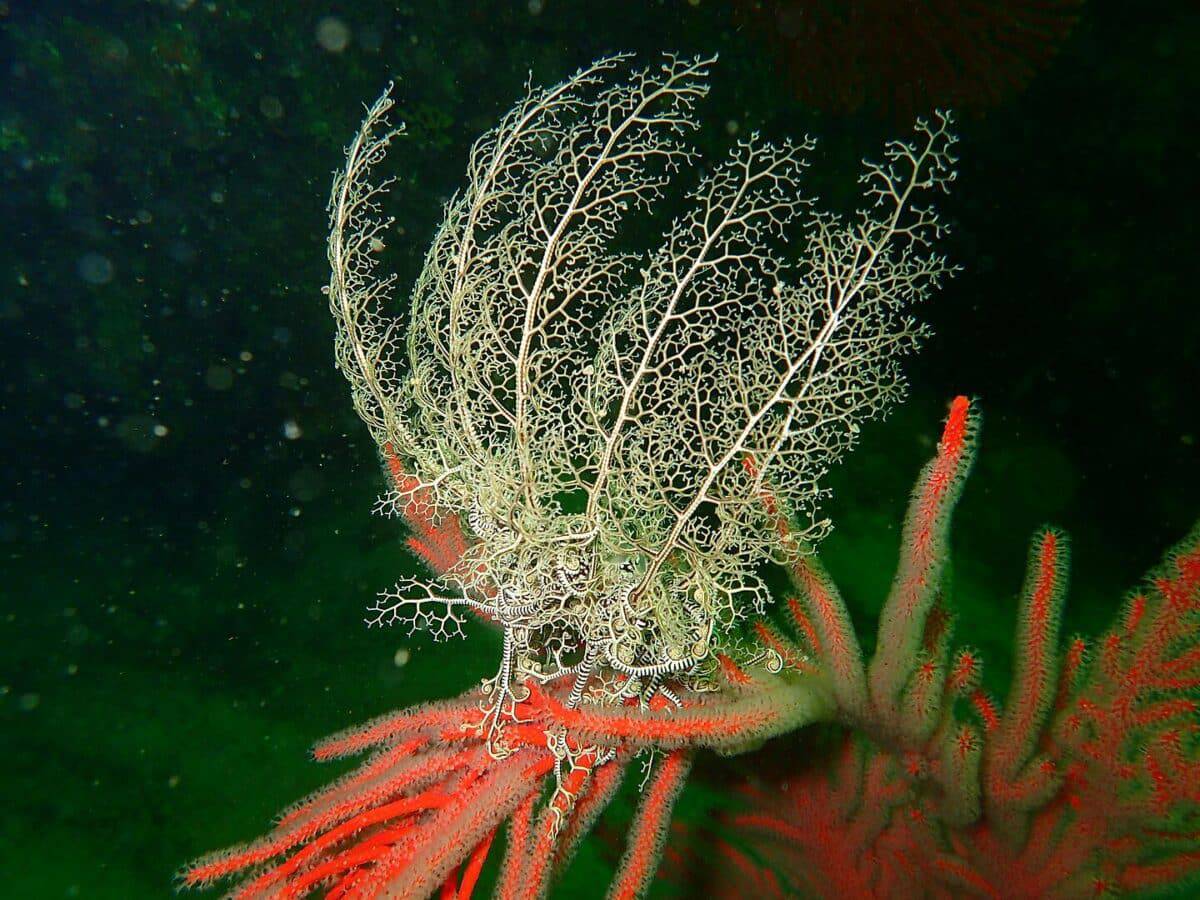
The Mariana Trench is home to the interesting and unusual basket star. They can grow three feet long and have a huge, five-pointed body with multiple branching arms. The basket star uses its arms to capture and eat its prey, primarily made up of small crustaceans and plankton. Additionally, they have a bioluminescent trait on the tips of their arms that they can use for communication and hunting in the murky Mariana Trench waters. Along the continental shelf, they are frequently found on rocky outcrops and ledges.
Frequently Asked Questions
What makes the Mariana Trench such a unique habitat for marine life?
The Mariana Trench is a unique habitat for marine life due to its immense depth and high pressure, which create a harsh and extreme environment that only a few species can withstand. The trench also has various geological features, such as hydrothermal vents and seamounts, that provide opportunities for food and shelter. Additionally, the lack of light and nutrients at such great depths has led to the evolution of bioluminescent species, which produce light to attract prey or mates.
Are there any endangered or threatened species found in the Mariana Trench?
The Mariana Trench is home to several endangered or threatened species, including the Pacific hagfish, the deep-sea shark, and the giant squid. These species are at risk due to human activities such as deep-sea fishing and pollution, as well as the effects of climate change on their habitat. Additionally, many deep-sea species’ slow reproductive rates and long lifespans make them particularly vulnerable to overexploitation and environmental degradation.
How do scientists study and explore the Mariana Trench?
Scientists use various tools and techniques to study and explore the Mariana Trench, including remotely operated vehicles (ROVs) and man submersibles that can withstand the intense pressure of the deep sea. These vehicles are equipped with cameras and sensors that allow scientists to observe and collect data on deep-sea species and their habitats. Researchers also use sampling devices to collect water, sediment, and biological samples from the trench, which can be analyzed in laboratories to study the physiology and genetics of deep-sea life. Additionally, advances in DNA sequencing technology have enabled scientists to study the genetic diversity and evolution of deep-sea species without physically collecting samples.
The Bottom Line
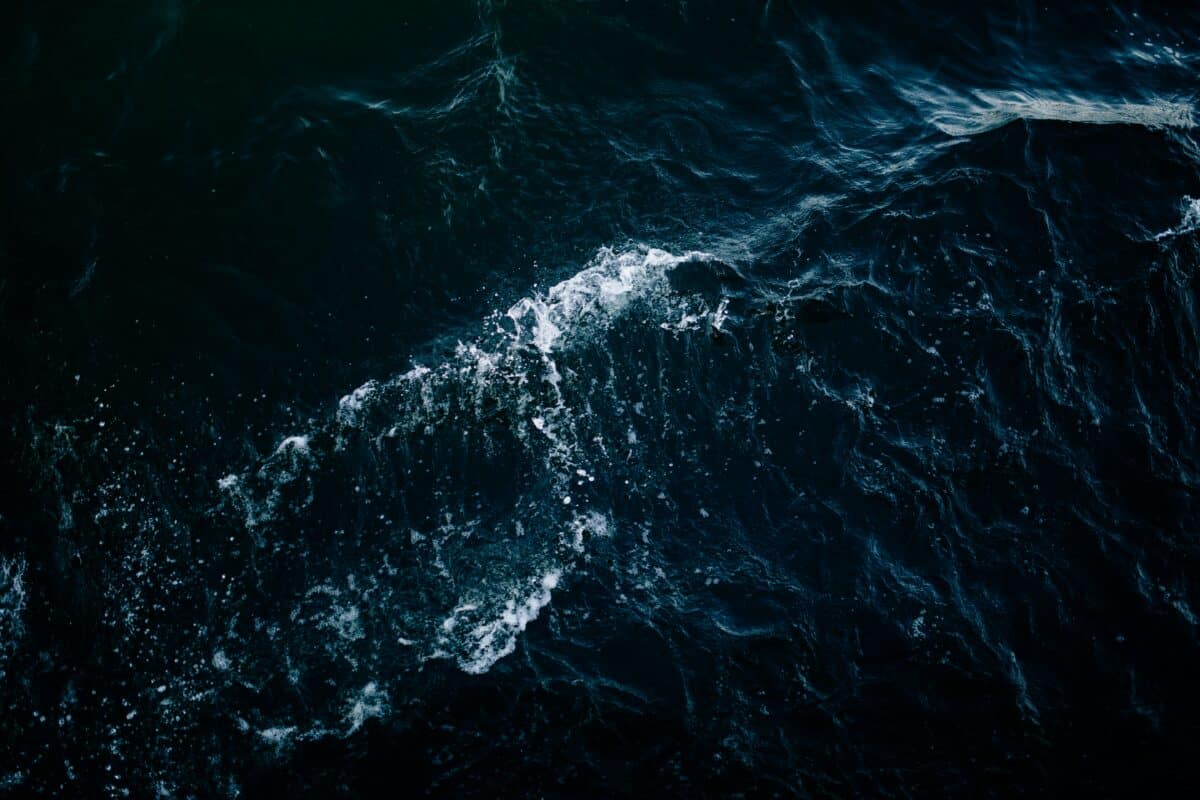
In summary, the Mariana Trench is a particularly spectacular location due to its great depth as well as the fascinating wildlife that calls its ominous waters home. Life survives in this desolate and hostile environment despite the extreme pressure and complete darkness.
The top 10 creatures in the Mariana Trench, from the strange but lovely snailfish to the elusive and fearsome giant squid, show life’s extraordinary diversity and adaptability. To think that such amazing creatures exist in a setting that is so foreign to our everyday lives is extremely inspiring.
We can only speculate as to what additional mysteries the Mariana Trench may hold and what new creatures we may find as we continue to study and learn more about it. While the Mariana Trench may be one of the planet’s most enigmatic locations, it’s also one of the most interesting and thrilling to explore.
If you enjoyed this blog, read more on:
Top 10 Galápagos Islands Creatures
The Unusual Diet Of Sea Cucumber
Join our Forum for free today!

- Usain Bolt vs. Peregrine Falcon – Speed Test in Their Domains - May 18, 2024
- Top 10 Animals in Yellowstone National Park - April 12, 2024
- Top 10 Omnivores - March 9, 2024

